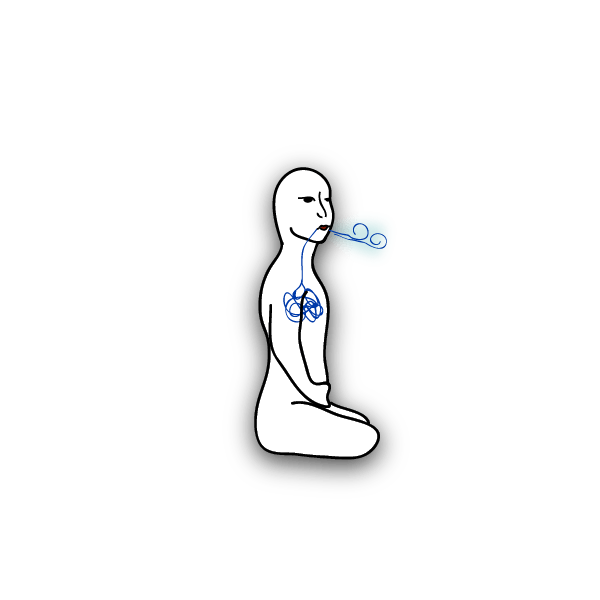Zen Master Seung Seung of the Kwan Um School of Zen taught that formal meditation practice is like going to the gym. A gym is where you work out to get stronger. And just like having bigger muscles allows you to lift bigger objects in life, having a stronger meditation practice keeps us centered even in the most difficult of times.
This short guide is a simple outline of how to start a daily meditation practice. And it starts with simply sitting down, breathing and being still.
Pick a Consistent Time and Place
Like anything in life, meditation is a habit. Whether you meditate for 5 minutes or 5 hours, you want to do it at the same time each day and generally in the same place. Doing this helps you use the habit of meditation to help the body relax. Time and place become cues for your body to let go, making the practice of meditation that much easier.


The Basic Form
Sitting on a cushion is the most common way to meditate. You don’t need special equipment. You don’t need to buy anything. You just need a pillow to raise yourself off the floor, to sit for a set amount of time and to watch the breath …. coming in and going out.
As the mind wonders and starts to think about the past or future, you gently let those thoughts go, relax your muscles and focus on this moment and on your breathe.
Conceptually, it’s that easy. In reality, it can be very hard.
Sitting Meditation
There’s nothing special about sitting meditation. You could lay down, sit on a chair or even stand. The Buddha is also portrayed in many different poses.
We generally use sitting meditation since it’s something everyone knows how to do. However, if you have health issues that make sitting difficult, you can do a different pose instead. Meditation is about finding peace not experiencing pain.
For sitting meditation, it’s important to have three points of contact on the ground and to be sure your head is upright and resting over your spine and that your spine is upright but relaxed. Being connected to the ground at three points ensures you don’t get hurt (and poor posture can get you hurt in meditation). Having an erect back is natural and protects your posture without needing to be stiff, regardless if you’re in a chair or on a cushion.


Following Breath
We use the breath as a point of focus because it’s something we do every moment without being conscious of it. That makes breath meditation an ideal place to start. It’s taking the unconscious activity in our moment and becoming aware of it.
To do this, put your focus about an inch away from the end of your nose, about where your breath flows over your upper lip. Notice the breath flowing outward, notice the pause and then notice how you draw your breath. Notice also how your lungs and body feels as it lets go of breath and as it takes breath.
Again, your mind will wonder. That’s OK. That’s what the mind does. Just don’t get attached to your mind’s thoughts. As the mind’s thoughts arise, let them fall away and instead focus on the breath.
Reconnecting After Meditation
After you meditate, take a moment and reflect on how you feel. Do you feel lighter? Do you feel anxious? Is there anger or joy? Is there nothing?
Whatever you feel, don’t judge. Just let those feelings be and sit with them for a few seconds. And then, get up and go about your day.
You may also want to take a moment for self care and do something simple, like drink a glass of water. And while it may sound a bit silly, smile, say thank you for the water and say thank you for the time to sit.
Gratitude and self love is very much a part of practice.


Carrying Calm through Your Day
If your meditation time is like being in a gym, as Zen Master Seung Seung said, living your life is what meditation prepares you for. As emotions and sounds and just life comes up through the day, let those things come up like the thoughts in your meditation: You’re not trying to control them, but instead gently letting them go.
This is very difficult at first. But as you meditate, being relaxed in your daily life becomes easier and easier.
Meditate with a Group
Meditation is a very good thing that you do for you and for the betterment of all beings that you interact with. But sometimes, meditation can bring up thoughts and feelings that have been long suppressed. Sitting with a group of other meditators can give you a place to talk about the feelings that come up. That’s why the Buddha made “Sangha”, or a group of fellow practitioners, one of the three pillars of Buddhist meditation practice.
Looking to practice with a group? Consider a group that meets at BIBS. You can find convenient times on our calendar. We look forward to seeing you.

You must be logged in to post a comment.